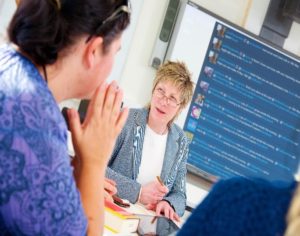A review of Teaching & Learning in Social Work for 2020
2020 was a strange year with many firsts for me – first global pandemic, first sabbatical, first live sessions in an online course, etc. Because of all these firsts, blogging took a bit of back seat to some of my other projects and goals for the year. I had four goals for the blog over the year, and some minor successes. They were:
#1 – Publish 30 posts – only published 19
#2 – Enhance the reach of the blog – there were almost 45,500 visitors from 153 different countries with each visitor spending an average of 1 minute on the blog.
#3 – Build a culture of engagement – only had 10 comments for the year.
#4 – Publish content in other places – there will be two articles in 2021 with content from the blog.
Outside of these goals, I did update content on the blog and created an archive page. The two most popular blog posts of 2020 were:
A Love Letter to Social Workers on the Front Lines of COVID-19 (4/10/20) by Melanie Sage with over 24,000 visits
The Power of Lighting in a Virtual Classroom: Tips on Improving Webcam Lighting for Online Educators (3/16/20) by Agata Dera with over 3,000 visits
Professional Collaboration Networks for Social Work Practice

In this post, I am outlining previously published content from this blog about the concept and practice of a Professional Collaboration Network (PCN), which are technology-mediated user-centered relationship constellations designed to enhance or enrich connections, knowledge, and professional opportunities. Using PCNs in social work practice started as an idea at a Think Tank hosted by the University at Buffalo’s School of Social Work in June 2019. The Think Tank’s goal was to brainstorm how to teach students in their new online Doctorate of Social Program (DSW) program to develop critical stakeholder networks using digital and social technologies. You will find a summary of each of the five original blog posts, along with a link to the full post.
Twitter for your Professional Collaboration Network (PCN)
Editor’s Note: This post is one in a series about how technology can be used to develop and sustain one’s professional network. The idea for this post came from a think tank hosted by the University at Buffalo’s School of Social Work in June 2019, looking for a way to teach students in their new online Doctorate of Social Program (DSW) program about how to develop key stakeholder networks in relation to a substantive topic area. In this series, we are exploring the concept of a Professional Collaboration Network (PCN), which are technology-mediated user-centered relationship constellations designed to enhance or enrich connections, knowledge, and professional opportunities. This post covers how you can use Twitter to create and support your PCN.
In light of our living in a time of rapid technological change and our professional mandate to keep up-to-date with the advances in our field, (Council on Social Work Education, 2015; National Association of Social Workers, 2018), social workers may benefit from building a professional collaboration network (PCN). We previously defined what a Professional Collaboration Network is this blog post: What is a professional collaboration network and why do you need one?

In essence, a PCN is created by social workers who connect with other professionals online for the purpose of learning and exchanging information. Prior to the ubiquitous use of the internet, professionals would typically keep up with the latest developments in their field via networking with their peers at conferences and continuing education opportunities, as well as via printed newsletters, magazines and trade publications. Nowadays, there are many technological tools to facilitate interactions with individuals across different disciplines, states or the world. PCNs typically include various online communities such as Twitter, LinkedIn, Facebook, social bookmarking sites and more.
What is a Professional Collaboration Network (PCN) & why do you need one?
Editor’s Note: This is the first in a series of blog posts about how technology can be used to develop and sustain one’s professional network. The idea for this post came from a think tank hosted by the University at Buffalo’s School of Social Work in June 2019, that I attended along with the other authors of this post. Our goal at this think tank was to brainstorm how to teach students in their new online Doctorate of Social Program (DSW) program about how to develop key stakeholder networks using digital and social technologies. In this series, we are exploring the concept of a Professional Collaboration Network (PCN), which are technology-mediated user-centered relationship constellations designed to enhance or enrich connections, knowledge, and professional opportunities. This post covers the “whys” and “whats” of a PCN.

Social media and other forms of digital technologies are ubiquitous tools for communication in the 21st century, including in the lives of clients and communities served by social workers. It is clear technological tools are being used to create and maintain relationships when a third of America’s marriages now start online (Cacioppo, Cacioppo, Gonzaga, Ogburn, & VanderWeele, 2013), and 69% of internet users utilize social media, 74% of those daily (Pew Research, 2018). Social work professionals need to understand how these tools work, and learn to use them for creating and maintaining professional relationships with colleagues, communities, and the vulnerable populations served by the profession, and disseminating information to communities of interest.
Consciously Connecting and Proactively Collaborating: The CoActEd Learner Mapping Tool in #SocWorkEd

Editor’s Note: Amanda Taylor-Beswick is a Senior Lecturer in the School of Social Work, Care and Community at the University of Central Lancashire. She is also an author of the book, The LearningWheel Book, whichprovides educators with a model for helping students and practitioners develop digital literacy skills. In this blog post, Amanda describes one of the tools from her book, the CoActEd Learner Mapping Tool. She tweets at @AMLTaylor66.
From the moment a social work student steps into the educational environment, they are engaged in a socialising process that involves exposure to, familiarisation with, and the development of professional norms. Through this carefully crafted learning experience a student’s Professional Learning Network (PLN), amongst other things, begins to form; professional relationships with academics, with practice partners, with practitioners and with student peers are built. This professional network is primarily local, largely institutional and generally geographically bound. However, digitisation means that the professional network no longer needs to be so rigid, so limited or so confined. The availability and affordances of social technologies (those that are #GDPR compliant) offer opportunities for social work students to connect outside of their direct or more natural community of learning. They can engage with the global social work community which, in previous times, may have been out of reach. The use of a medium through which to map and to therefore build connections forms the basis of this blog.
List of Podcasts for Social Work
Editor’s Note: Melanie Sage is an assistant professor of social work in the School of Social Work at the University at Buffalo. In this blog post, she gives an overview of podcasting in social work and shares her crowdsourced list of social work podcasts.
Once upon a time in not-so-long-ago history, broadcast media was limited to the hands of radio professionals with fancy recording devices. Regular people on tight budgets have long tried to harness the power of audio recording and broadcasting, from ham operators to low-fi analog reel or tape recorders. Suddenly, in the last decade, affordable high-quality recording devices fit in the palms of our hands, along with the means to broadcast our voices internationally at very little cost.
Early social work podcast pioneer greats include Jonathan Singer, who launched the Social Work Podcast in 2007 and has over 125 episodes, and inSocialWork, which launched in 2008 at the University at Buffalo School of Social Work, and now has over 250 episodes. You can listen to either of them in your favorite podcast streamer, such as Apple’s iTunes Podcast Streamer or Spotify, for over 300 hours of learning from experts in our field. You can listen during your commute, at the gym, while doing chores, or when you’re getting ready in the morning. They make it so easy to fit lifelong learning into your day. Learn more about how to listen to podcasts by watching this short video.



